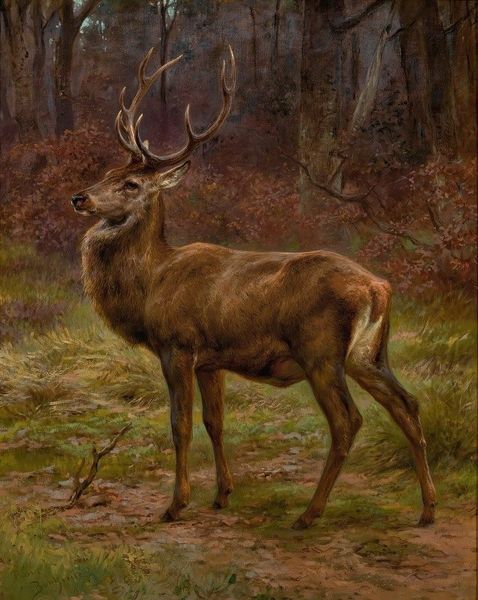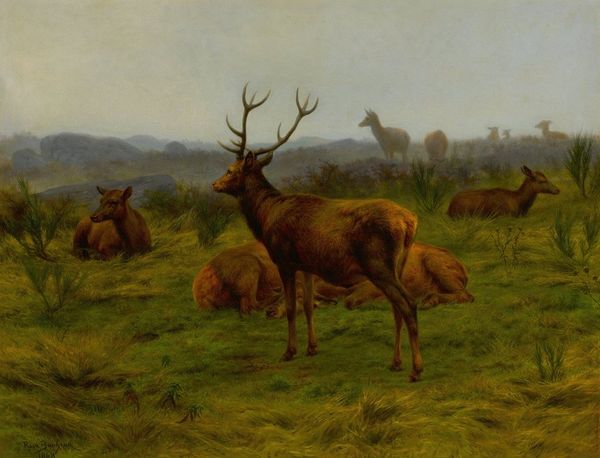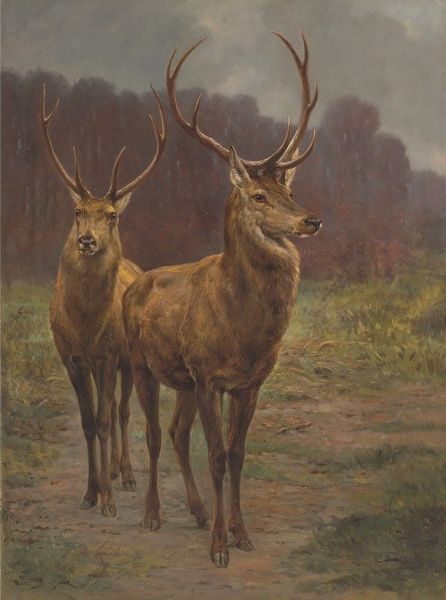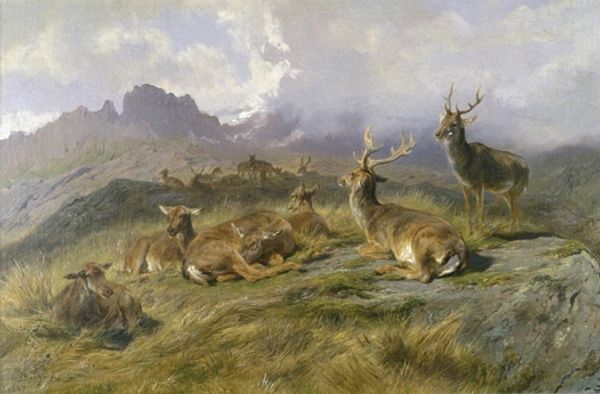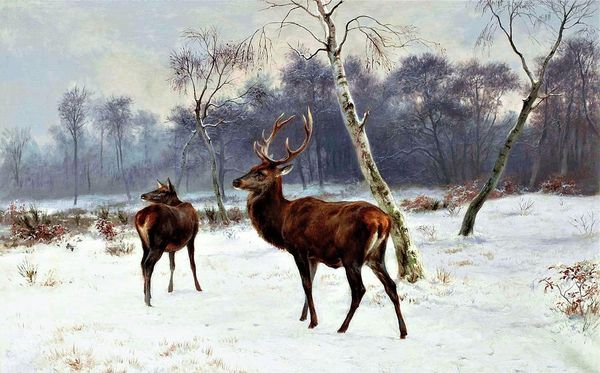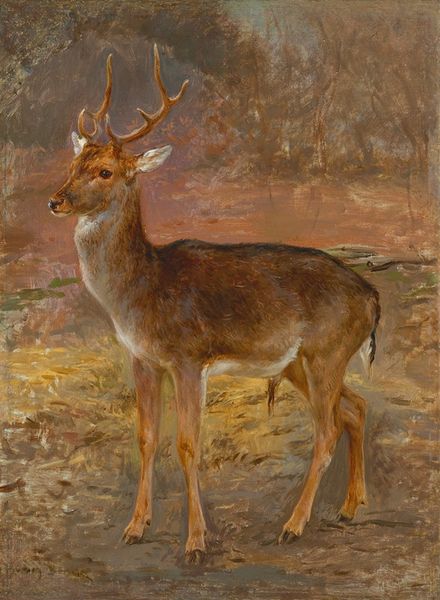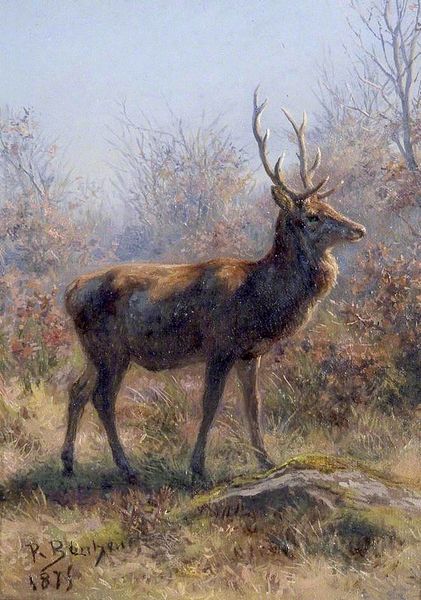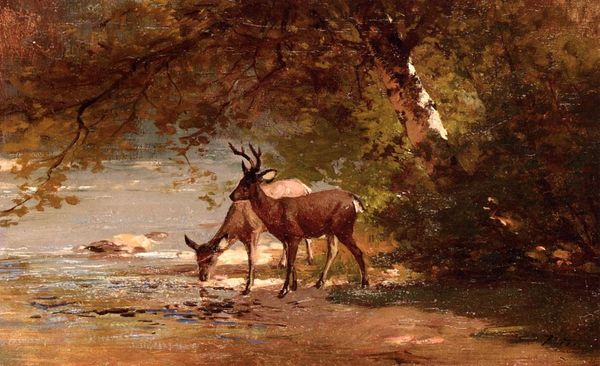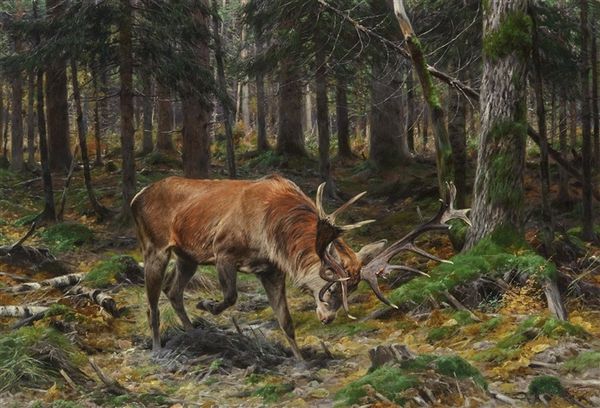
Copyright: Public Domain: Artvee
Curator: Rosa Bonheur painted this oil on canvas titled *Cerf et biches dans la forêt, automne*, or *Stag and deer in the forest, autumn* in 1878. It’s a prime example of her animal paintings. What are your first impressions? Editor: Immediately, I'm struck by the composition. The stag is positioned heroically in the foreground, but there's a real tension between realism and romanticism. The colour palette is deliberately muted, with these ochre and brown tones. The scale seems intimate rather than imposing. Curator: Bonheur really tapped into the Romantic movement's vision of nature as powerful, untamed and carrying emotional depth. It portrays animals in their natural surroundings. Deer often symbolized gentleness, peace, or even spiritual connection within various cultural contexts. This majestic stag embodies strength and nobility. Editor: And she cleverly balances the grandeur of the subject with a meticulous naturalism. The brushstrokes describing the fur, the light filtering through the leaves - all are acutely observed. It does not only represent reality but constructs it through visual language. The verticality of the trees opposes the horizontality of the deers' posture, creating contrast. Curator: Bonheur's gender complicated her participation in artistic circles, since animal painting, like history painting, was usually reserved for men. Still, this artwork communicates respect for the animals and the landscape; these symbols would have certainly resonated with 19th century sensibilities and the broader public that visited salons at the time. I think that is why this painting continues to captivate. Editor: I agree. And from a formal point of view, there's an underlying structure to the composition that elevates it beyond a simple nature scene, a strategic placement of light and shadow that speaks volumes. I am looking for underlying patterns everywhere, these deers placed behind and slightly above the male one… There must be one. Curator: Indeed. It reveals the ways humans have looked at the natural world for centuries through visual representations of animal symbols in the wild. It’s almost a psychological mirror reflecting back at us. Editor: Absolutely. A formal lens helps unlock the secrets of how these visual dialogues are structured. And the careful use of form contributes to a timeless aesthetic quality, which continues to appeal viewers.
Comments
No comments
Be the first to comment and join the conversation on the ultimate creative platform.
